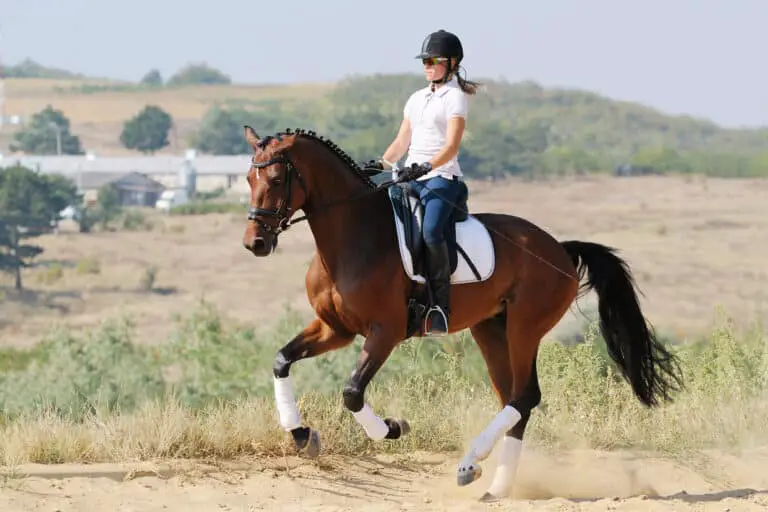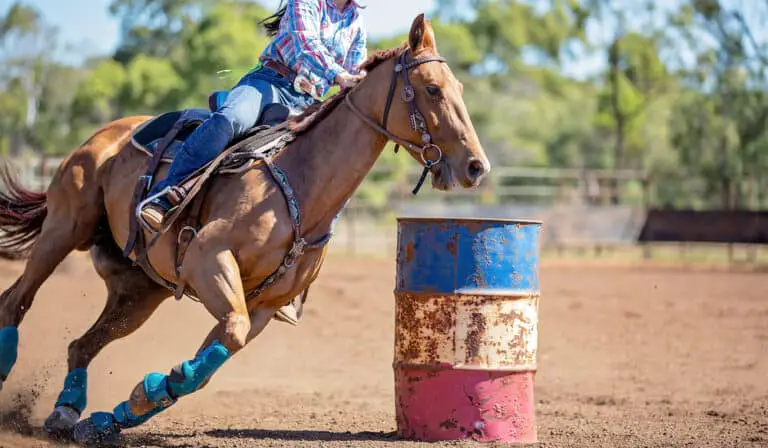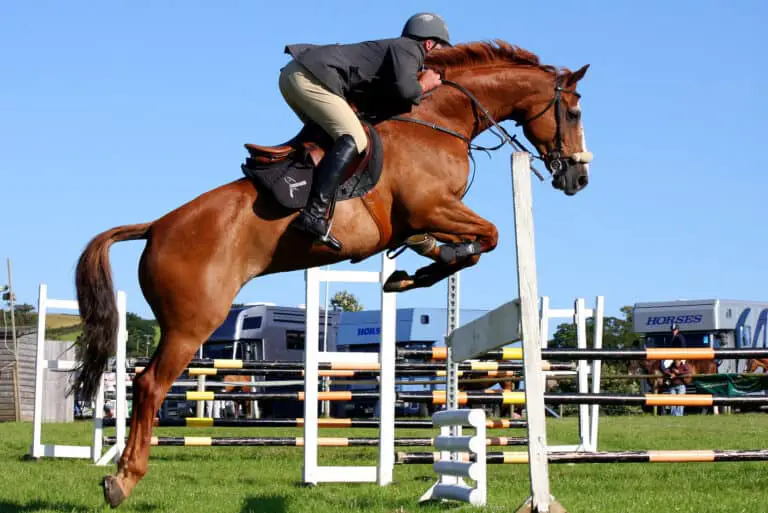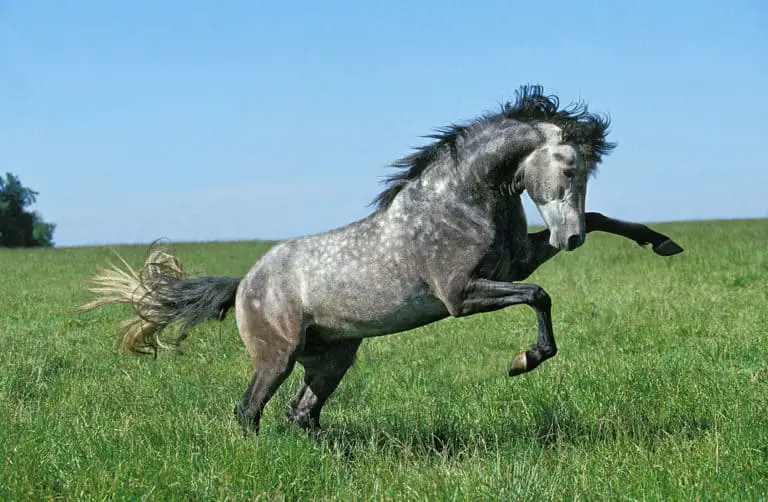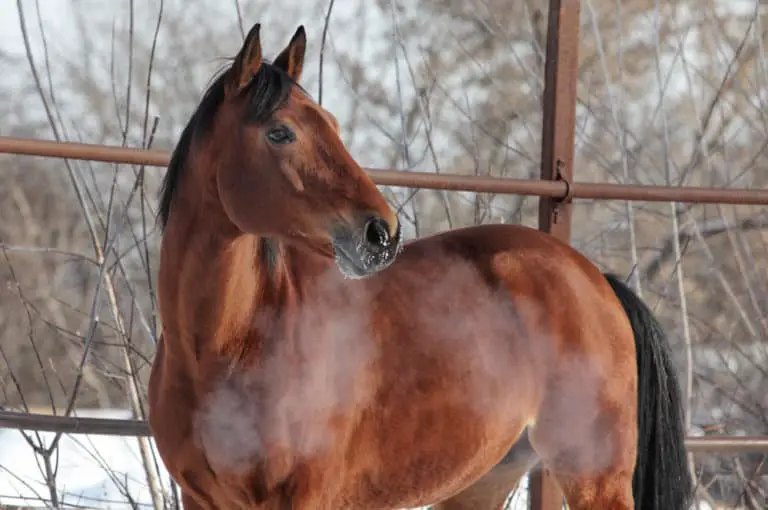Falabella Horse Breed: Care, Cost & History (2025)
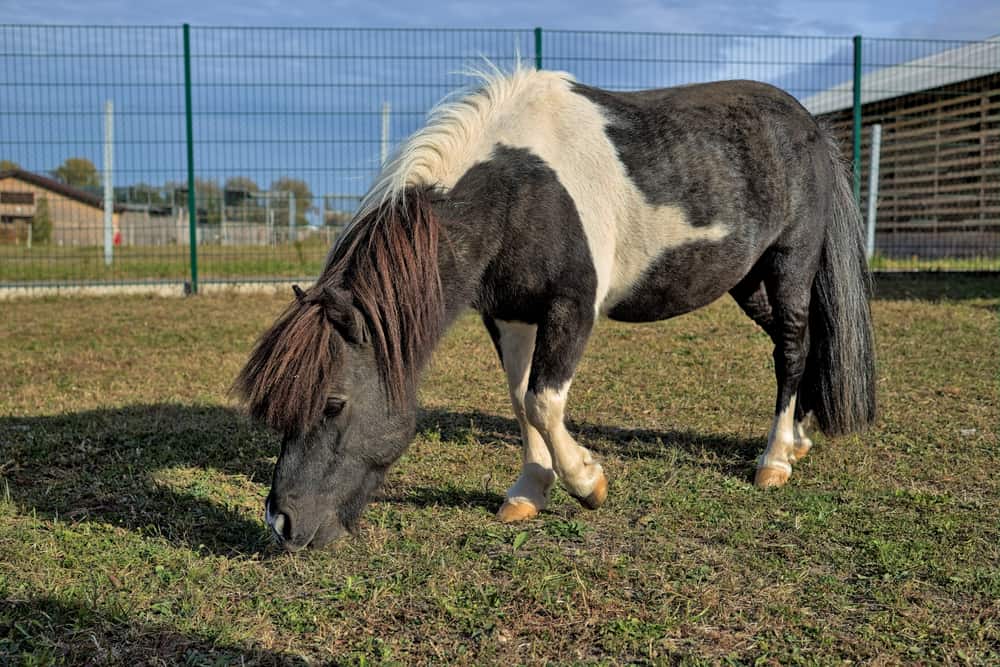
The Falabella horse developed in isolation on the Argentine pampas. Spaniards deserted their Andalusian horses, who survived on their own. The horses adapted and became smaller. The Falabella family found the horses and continued selective breeding, creating the horse as we know it today – the world’s smallest breed and one that lives for 40 to 45 years.
Breed: Falabella horse
Adult Weight: 154-176 pounds
Adult Height: 6.1-8.2 hands (25-34 inches)
Origin: Argentina
Use: Pets, show, guide, and therapy horses
Colors: Bay, brown, chestnut, black, pinto
Features: Small size, petite frame
Lifespan: 40-45 years
Character: Gentle, kind temperament, good with children
Gait: Spirited and smooth
Best for: Children
- Characteristics
- Falabella Horse Care
- Falabella Horse History
- Modern Falabellas
- Cost and Ownership
- Buying a Falabella
- Similar Breeds
Falabella Horse Characteristics
The Falabella horse characteristics are still similar to the Andalusian, and they’ve also been compared with the Arabian and Thoroughbred. The Falabella horse head is refined, with large eyes and a broad forehead. The mane has fine, straight hair and sometimes falls on both sides of the neck. The legs are straight and clean, with small, oval hooves.
Size
Falabella size has earned them recognition as the world’s smallest horse breed. The Falabella Miniature Horse Association states that Falabella horse height is between 6.1-8.2 hands or 25 to 34 inches. (1)
The most common heights are 27 to 34 inches, with male horses slightly taller than females. The birth height can be as small as 12 inches and as tall as 22 inches.
They are considered full-grown Falabella horses at three years old. The breed registry prioritizes pure ancestry oversize, therefore all heights can be registered. (1)
The small size limits what the Falabella horse can be used for, but their value is as companions, for their rare bloodlines, and with children.
Weight
Refinement is a key breed characteristic of the smallest horse breed, and this starts in the bone structure, which is refined yet sturdy. Therefore, Falabella horse weight is proportionate to their height. Their weight and body type don’t resemble the chunky pony stereotype at all.
Adults weigh between 154 and 176 pounds, although it’s also common to see smaller adults, weighing only 120 pounds. Taller horses are usually heavier, and males usually weigh more than females.
A foal can weigh as little as just under two pounds at birth. They usually reach their full weight around the same time they reach their full height, at three years of age.
Colors
The beautiful Falabella horse comes in many colors. They can be any color, quality and conformation are primary breeding goals, not color. However, the most common Falabella horse colors are bay, chestnut, palomino, brown, black, and pintos.
Pintaloosa and red or black spotted coat patterns are rare Falabella horse colors. The Pintaloosa coat pattern looks like what it sounds like – a mix of an Appaloosa and a Pinto. These horses are in high demand but there aren’t many available.
Although breeders appreciate the demand for these colorful horses, their primary focus is on producing quality horses, and they tend not to breed for color.
Temperament
Temperament is another focus of breeders, and the Falabella horse temperament is exceptional. They are wonderful horses to have with children, adults, and senior citizens.
Falabella horse behavior is often characterized as outgoing or gregarious; they are friendly and enjoy people. Sometimes they are called feisty when seen out playing in a field or pasture with other Falabellas. They are also very intelligent, and it’s easy to train them for a variety of uses.
The Falabella foal is known for being an affectionate animal. Coupled with their small size, their affectionate disposition further endears them to anyone they come in contact with.
The United States Equestrian Federation general rules are used, so children cannot exhibit stallions at shows. (2)
Falabella Horse Care
Some people assume that Falabella horse care is easy because of its small size, but it’s this feature that warrants some precautions. It’s easy for them to get hurt in small places or be overfed. The Falabella horse lifespan is also exceptionally long at 40 to 45 years, meaning they are a longer-term commitment than other horses.
Diet and Nutrition
The Falabella diet is similar to the diet of every horse, except on a much smaller scale. It’s easy to overfeed a Falabella miniature horse and obesity can cause other health problems. Horses can also become too skinny, which is another issue. Feeling the horse’s body weekly can help determine if they are getting too fat or too thin. (3)
Water is the most important nutrient for animals, and they should have constant access to clean, fresh water. Forage, in the form of hay and grass, is the second biggest component of the diet.
Grain may be added to balance their energy and nutritional requirements. Trace mineral salt should also be offered free choice. (3)
Health Problems
Miniature horses are known for their health issues, including genetic problems. The Falabella mini horse is unique in that it’s not plagued by these same health problems. Their long lifespan of up to 45 years is one piece of evidence showing how few problems there are. (4)
Feeding the smallest pony can lead to them becoming overweight. Most people overfeed ponies and give them more than they need, and this can lead to health problems, including hyperlipemia, a fat mobilization issue with serious consequences. (4)
Miniature horses don’t burn as many calories and also have a faster metabolism than full-size horses. Consult an equine nutritionist or veterinarian for help if needed. (4)
Grooming
Since Falabella horses are small and love people, it’s fun and easy to groom them. They should be groomed daily, just like full-size horses, to check for any injuries and keep their skin and coat in good condition. At a minimum, the hooves must be picked daily. (5)
Falabella grooming is one way to bond with the animal since they aren’t often ridden or worked the way other horses are. It’s important to use the grooming tools correctly, starting with a curry comb and avoiding sensitive areas like the face and legs. Follow with the stiff brush and the soft brush. Take special care with the mane and tail so you don’t break the hairs. (5)
Falabella Horse History
Falabella horse history began 200 years ago near Buenos Aires in Argentina and has been carefully guided by the Falabella family since then.
The smallest horses that exhibited the best qualities were selectively bred. Articles in Western Horseman and National Geographic magazines in the 1960s introduced the breed to the rest of the world, and the rest is history.
Origin
The Falabella horse origin begins in Spain with the Andalusian and other horses that the Spainiards took with them to conquer new places. They abandoned their horses in Argentina, and the horses survived on their own in the harsh pamaps, or plains.
The horses changed genetically to adapt to the new climate. They were also isolated, therefore inbreeding occurred, and horses became smaller over time.
Patrick Newell was the first to find the small horses in with other herds near Buenos Aires in the 1840s. He started collecting all the small horses that he could find, seeking the best in quality and smallest in size.
Historic Development
The Falabella breed is as much the story of a small group of men and their dedication to breeding these horses as the breed history.
Newell continued finding and breeding the best and smallest horses, passing his knowledge and his herd to Juan Falabella, his son-in-law.
Next, Juan’s son Emilio continued the herd, and then his son, Julio Falabella. The knowledge and horses passed to each, including the use of different breeds – Criollo horses and those with Pinto and Appaloosa markings.
Julio made the breed famous through the interviews he did with magazines in the 1960s. He died in 1980, and his family continues breeding and stewarding the Falabella horse in Argentina and the United States.
Notable Falabella Horses
One could argue that all members of the breed are famous Falabella horses – they are beloved and renowned for their size and temperament.
The breed is so rare, that just the distinction of being a Falabella does make them famous. A few have become more notable because of their affiliations with wineries, movies, and their Falabella horse pedigree.
Chianti
Chianti was a Falabella stallion, and part of the first herd imported to the United States in the 1960s. He was named for a wine at the Regina Winery in California, where he and his herd mates were used for marketing. His color was black Leopard Appaloosa, and he produced some of the first Appaloosas within the breed.
Toyland Zodiac
Toyland Zodiac was born in 1976 in the United States and his name is seen in the pedigrees of some of the best and most beautiful members of the Falabella horse breed. He was also a black Leopard Appaloosa stallion and 31 inches tall. He has Falabella family breeding – Julio’s daughter dispersed her herd to the Toyland Farm.
Apple the Movie Horse
Toyland Crimson is now better known as Apple the Movie Horse. She’s a granddaughter of Toyland Zodiac and starred as Apple in the 2016 movie, Apple of My Eye. The movie is about a teenage girl that goes blind in a riding accident, and Apple becomes her new eyes and best friend.
Myths and Legends
Myths and legends surround the breed, in part because there are so few, and because they remained unknown to the rest of the world until the 1960s. Many Falabella horse legends surround their incredible health and lifespan. One legendary Falabella horse is also said to have influenced many of the Miniature horses in the world.
Large Hearts
Falabellas have large hearts, and not just with their affection. The size of a Falabella horse heart is the same as a regular-sized horse heart. There is a little extra space for it because they have one less set of ribs, but also one fewer vertebrae. The large heart contributes to their exceptional health.
The Lifespan
The Falabella horse lives for 40 to 45 years, a truly legendary feat. Not everyone believed that they really lived this long though, so some French veterinarians conducted a study. This is when they discovered that the horses had large hearts, and they also credit the extra-large heart with contributing to the long lifespan.
Influencers of the Miniature Horse
Napoleon I was born at Falabella Farm in Argentina in 1937. He was a short and stocky chestnut piebald stallion – 27 inches and 100 pounds – and a family favorite. His breeding established and influenced many of the miniature horses we see today. Napoleon died at age 42 and the family put a monument up in his honor.
Modern Falabella Horses
The Falabella pony is popular in many parts of the world today, from Argentina to the United States and Europe. They are a real-life my little pony and owning one is a status symbol. Part of the breed’s allure is their relative mystery, and the types of Falabella horses, primarily the different colors, add to their popularity.
Breeding
All Falabella breeding traces back to the Falabella farm and Patrick Newell’s work. Today, the breed is found in Argentina, Canada, Europe, the United Kingdom, and the United States.
Only those with Falabella horse breeding, tracing back to Falabella Farm in Argentina, can be registered as Falabella horses. A Miniature horse may have the same short height as a Falabella, but without the bloodlines, cannot be one.
The Falabella family still breeds the horses in Argentina and offers them for sale. Julio’s daughter moved to the United States with her horses and later sold them to Toyland Farm. All breeders focus on type, conformation, temperament, and size, with color a secondary trait.
Population
The Falabella is a rare breed, and the Falabella Miniature Horse Association estimates that there are only a few thousand in the entire world. In fact, the breed association has registered fewer than 2,000 horses total since it was established in the United States in 1973. (1)
As such, the breed is on the at-risk list of the Food and Agriculture Organization of the United Nations. The largest Falabella horse population is still in Argentina at Falabella Farm where the breed originated. The United States has the next largest population because of imports and a member of the Falabella family moved to the country with her horses.
Uses
The Falabella horse uses include friend, companion, family member, therapy horse, and guide animal. They are also used by small children for riding and driving. Many people enjoy showing their Falabella horses.
The Falabella horse gait is spirited and energetic, and they appear lively when being ridden, driven, or out in the pasture with their herd mates. Their docile temperament means that they are fun and easy to ride and drive despite their spirited gaits.
Many consider the breed a toy, and one farm used that theme for their farm name. The Schleich toy company also made a model of a Falabella gelding for children to play with.
Falabella Horse Prices
The law of supply and demand influences Falabella horse price; they are a rare breed and are therefore expensive to purchase.
But, the expense doesn’t end at the initial purchase price. The horse needs board, feed, veterinary, and hoof care. All of these add to the annual expenses and the overall price of a Falabella horse.
Purchase Price
The price of Falabella horse ranges from $1,500 to $12,000, and some can be priced higher. Factors influencing the price are bloodlines, size, and color. (1) Falabella horse training may further increase the price, as one trained to ride and drive or as a therapy or guide animal will also have an increased value.
It’s said that people paid astronomical prices for Julio’s horses when the world first learned of the breed in the 1960s. There are rumors that a Falabella horse sold for close to $200,000. As a rare breed, the Falabella costs a lot to purchase, but they also hold their value.
Ownership Costs
Owning a horse is expensive – even if it’s a very small horse. The Falabella price starts with the purchase price, and then each year accrues additional expenses for the board, feed, veterinary, and hoof care. The Falabella horse cost of ownership is between $1,770 and $12,930 each year – and that can continue for up to 45 years!
Board
Julio Falabella kept some of his horses in the house – yet another legend of the breed – but that’s not an option for everyone. So, the board is necessary, this is the place where the horse lives and includes shelter and turnout. It is between $1,200 and $7,200 each year for Falabella horse board cost. (6)
Feed
The Falabella is an easy keeper, but they still require some feed. The cost for hay, which supplements grass when it’s not available, varies in different places. Expect Falabella horse feed cost to be between $250 and $4,380 per year. As a small horse, the price will be at the lower end. (6)
Veterinary Care
Another good feature about Falabellas is how healthy they are. But veterinary care is more than just health problems. Vaccines, dental care, and deworming are needed each year. The Falabella horse veterinary cost will range from $250 to $350 each year for this routine and essential care. Injuries or illness would add to that cost. (6)
Hoof Care
All horses need hoof care every six to eight weeks to keep their feet healthy and strong. Special attention should be paid to wear on one side of the hooves with Falabellas because lunging is a primary form of exercise. The annual Falabella horse hoof care cost is $120 to $1,000. (6)
Buying a Falabella Horse
Buying a horse is a big decision and a commitment. The Falabella breed is rare, and that causes some people to buy the first horse they find for sale. A better alternative is to do your homework, find several horses or breeders, and meet the horses before purchasing one. This ensures you are a good fit.
Is the Falabella Horse Right for You?
Owning a Falabella horse is the right choice if you enjoy an animal with a wonderful personality. They are also the perfect option for people that need therapy or guide animal because they are intelligent with a long lifespan.
Small children love riding a Falabella horse, it’s exactly the right size for them and isn’t intimidating the way ponies and regular horses are. They can also drive the horse for a few more years once they are too big to ride it.
Adults looking for horses they can ride or drive should seek another breed. But, adults that are interested in showing and model horse classes at shows will enjoy the Falabella.
How to Buy a Falabella Horse?
Buying a Falabella horse is challenging because they’re a rare breed. Most horses quickly sell when they are offered for sale. Connecting with a Falabella breeder is the best course of action.
The breeder can tell you more about owning and caring for the breed, bloodlines, and horse uses. They can also let you know when they or other breeders have horses for sale.
Avoid the impulse to buy a horse without meeting it. A good breeder will let you place a deposit and hold the horse while you make a final decision. Look for horses registered with the Falabella breed registry. Without that certification, it could be just a Miniature horse masquerading as a Falabella.
Similar Breeds to Falabella
Several types of horses are Falabella breed alternatives. The Miniature Horse is closest, being slightly larger than the Falabella with similar characteristics. The Shetland Pony is also larger, and popular for riding and driving, although with a completely different body type. The Noma is the largest of the breed alternatives, and a rare breed only found in Japan.
Miniature Horse
The Miniature Horse developed through hundreds of years of careful breeding and is especially popular in Europe and the United States. The average size is 8 to 9 hands, and while there are some special breed registries, Miniature Horse registries will dual register the Falabella. They have wonderful temperaments and are used for pets, therapy, and shows.
Shetland Pony
The Shetland Pony originated in the Shetland Isles, part of northern Scotland. They’re only about 10 hands and are a hardy breed known for their strength. Shetlands have thick coats and plenty of hair to survive the cold climate. They’re used for riding, driving, and pack purposes. Shetlands were used in mines because of their small size.
Noma
The Noma is a rare breed that originates in Japan. They are 12 hands or shorter, and at one time there were only six left in existence. The breed is protected and lives on the Noma Uma Highland reserve. They were developed for agriculture and to navigate the steep terrain.
FAQ
What is a Falabella horse?
A Falabella is a miniature horse and the smallest breed. Although miniature, they are strong and small children can ride or drive them.
What does a Falabella horse look like?
A Falabella horse looks like a miniature version of a Thoroughbred or Arabian. They are only about two feet tall at the withers.
How did the Falabella horse get its name?
The Falabella horse is named for Juan Falabella, and his descendant Julio C. Falabella, the people that helped develop the breed.
Can you ride a Falabella horse?
Small children can ride the Falabella horse.
Are Falabella horses good for beginners?
Yes, Falabella horses are good for beginners because they are so small and have a kind temperament.
How tall is a Falabella horse?
The Falabella horse is 6.1-8.2 hands tall, or 25 to 34 inches.
How much does a Falabella horse weigh?
An adult Falabella horse weighs between 154 and 176 pounds and can weigh as little as 100 pounds.
How big is a Falabella horse?
The Falabella horse is the smallest breed of horse, standing only about two feet tall at the withers with a slim body.
How much does a Falabella horse cost?
Expect the cost of a Falabella horse to be $1,500 to $12,000 because they are a rare breed.
How much does a Falabella horse ownership cost?
It costs between $1,770 and $12,930 each year to own a Falabella horse, usually the lower end of the range.
How long do Falabella horses live?
The Falabella horse has an incredibly long lifespan, between 40 and 45 years.
How fast can a Falabella horse run?
A Falabella horse can run 18 to 20 miles per hour.
How much can a Falabella horse pull?
The Falabella horse can only pull 231 to 264 pounds.
How much can a Falabella horse carry?
The Falabella horse can only carry between 30 and 35 pounds.
At what age is a Falabella horse full grown?
The Falabella horse is usually full-grown at three years of age.
What are Falabella horses used for?
Falabella horses are used as pets and for small children to ride or drive.
References
- Falabella Miniature Horse Association (FMHA). 2022. Link
- United States Equestrian Federation. 2022. Licensed Competitions. Link
- Michigan 4-H Miniature Horse Committee. 2009. Feeding the Miniature Horse. Link
- The Horse. 2013. Maximizing Mini Health. Link
- Ohio State University. 2017. Introduction to Small Equine. Link
- Arabian Horse Association. 2022. What is the Cost of Providing for Them? Link

